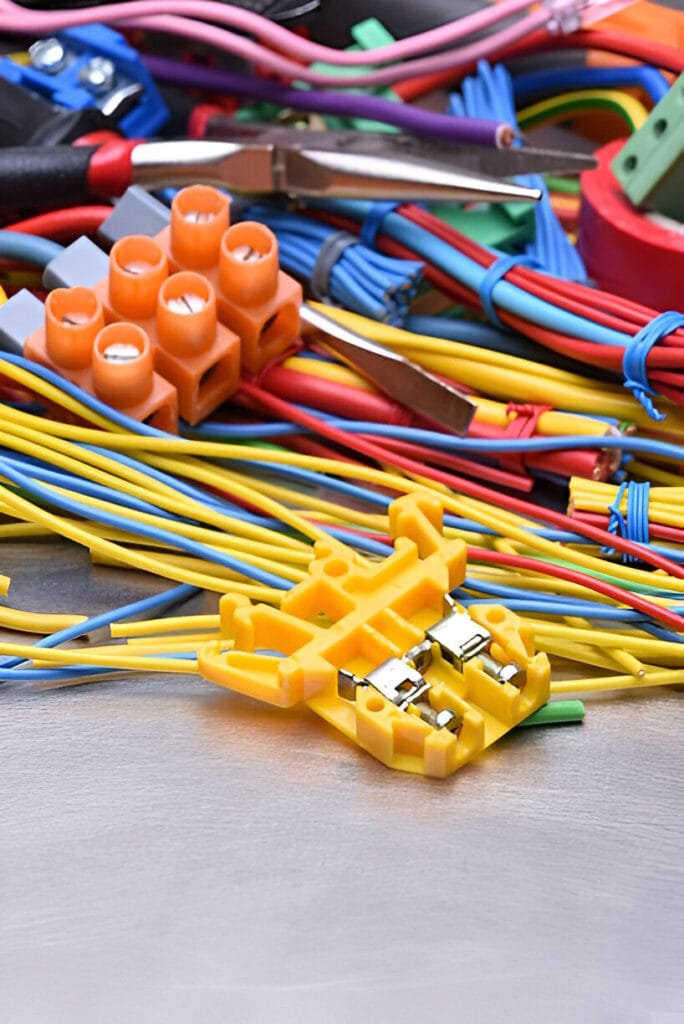Automotive connectors play a vital role in modern vehicle electronic systems. Their performance directly impacts vehicle safety, reliability, and user experience. Whether it’s power transmission, signal communication, or connecting in-car entertainment systems, high-quality automotive connectors serve as the essential bridge.
In this article, we’ll dive into the key performance indicators of automotive connectors, helping you understand their importance and make informed purchasing decisions. If you’re searching for reliable, high-performance automotive connectors, this guide is your go-to resource.
Main Types and Applications of Automotive Connectors
There are many types of automotive connectors, each designed for different connection needs. The main types include:
- Wire-to-Wire Connectors
Used to connect two or more wires, these are common in vehicle electrical branch systems. - Wire-to-Board Connectors
These link wires to circuit boards, widely used in control modules and sensor interfaces. - Board-to-Board Connectors
Designed for connections between circuit boards, ideal for complex electronic modules.
You’ll find these connectors in various automotive systems:
- Power Systems: Ensure stable transmission of power and signals, supporting engine management and EV battery systems.
- In-Car Entertainment: Connect audio, navigation, and displays for a better driving experience.
- Safety Systems: Link airbags, ABS, and electronic stability systems, keeping you safe on the road.
Understanding these types and applications helps you choose the right connector for your specific needs.
Key Performance Indicators of Automotive Connectors
When selecting automotive connectors, performance is the top priority. The main indicators include:
1. Electrical Performance
- Conductivity: Good conductivity ensures smooth signal and current transmission.
- Contact Resistance: Low contact resistance reduces energy loss and improves system efficiency.
- Insulation: Prevents short circuits and leakage, ensuring safety.
2. Mechanical Performance
- Mating Cycles: Connectors must withstand thousands of connections and disconnections without damage.
- Vibration and Shock Resistance: Vehicles experience constant vibration and impact; connectors must maintain stable connections.
3. Environmental Adaptability
- High Temperature Resistance: Engine compartments are hot, so connectors must handle high temperatures.
- Moisture and Corrosion Resistance: Protects against water and chemicals, extending connector lifespan.
These performance indicators are crucial for reliability and safety—make them your focus when sourcing connectors.
Core Factors Affecting Automotive Connector Performance
What makes one automotive connector better than another? Here are the key factors:
- Material Selection and Craftsmanship
Using high-quality conductor materials (like copper alloys) and heat-resistant plastics ensures both electrical and mechanical performance. Advanced surface treatments (such as gold plating) improve contact reliability. - Structural Design and Innovation
Smart structural design enhances connection stability and protection, while innovative layouts meet the demands of compact spaces and high-density wiring. - Quality Control and Testing
Strict manufacturing processes and comprehensive testing (like voltage and salt spray tests) guarantee every connector meets standards.
Knowing these factors helps you identify top suppliers and products.
Industry Standards and Certification Requirements
Automotive connectors must comply with industry standards to ensure quality and performance. The most common are:
- ISO Standards: Like ISO 9001 for quality management, ensuring regulated production processes.
- IATF 16949: The automotive industry’s quality management standard, focusing on continuous improvement and defect prevention.
- OEM Requirements: Different automakers have specific technical and quality demands for connectors.
Products that meet these standards are more trustworthy and easier to pass technical audits.
Tips for Choosing a Quality Automotive Connectors Supplier
With so many suppliers out there, how do you pick the right one? Here are a few tips:
- R&D Capability
Does the supplier have a strong team that can customize products to your needs? - Manufacturing Strength
Advanced equipment and stable capacity ensure timely delivery. - Quality Management
Look for IATF 16949 certification and robust quality control systems. - After-Sales Service
Timely technical support and problem-solving are essential.
Choosing the right supplier means better product quality and smoother cooperation.
The performance of automotive connectors is crucial for the stability and safety of automotive electronic systems. After reading this guide, do you feel more confident about “automotive connectors”? If you’re looking for high-quality automotive connectors, contact us today for professional solutions and excellent service. Let’s work together to build a safer, smarter automotive future!
FAQ
The main issues are poor contact, insulation damage, and difficult mating, often caused by material aging, poor design, or improper installation.
Focus on electrical performance (such as contact resistance), mechanical performance (mating cycles), and environmental adaptability (temperature and moisture resistance).
Check for IATF 16949 certification and relevant test reports to ensure compliance with technical requirements.
Many suppliers offer customization, designing size, material, and performance to meet your needs.
High-quality connectors usually last for thousands of mating cycles; actual lifespan depends on the working environment and maintenance.


